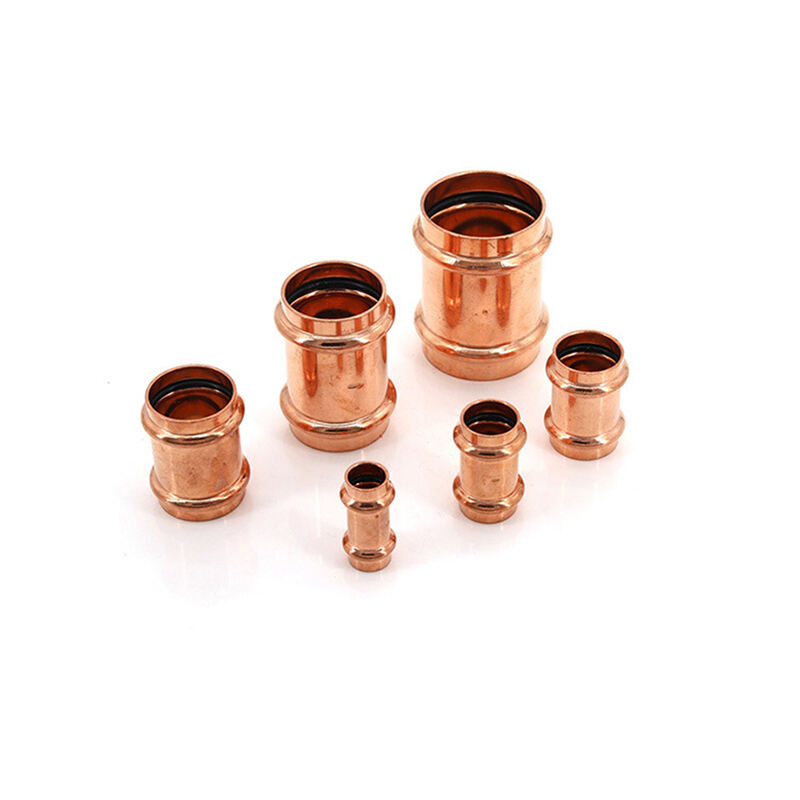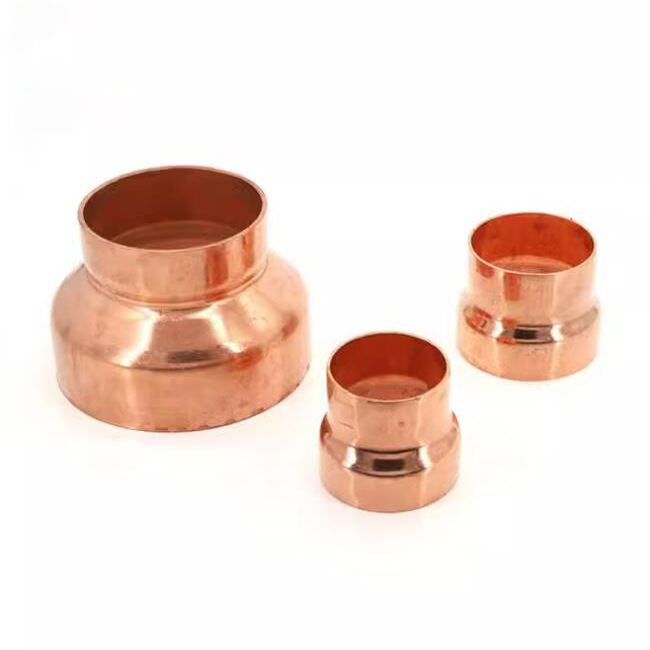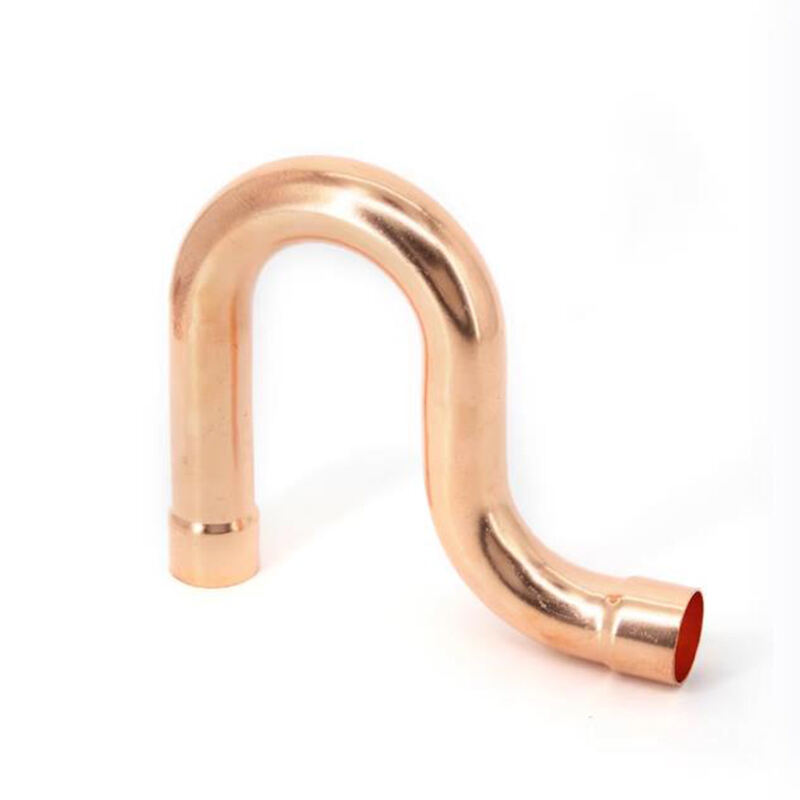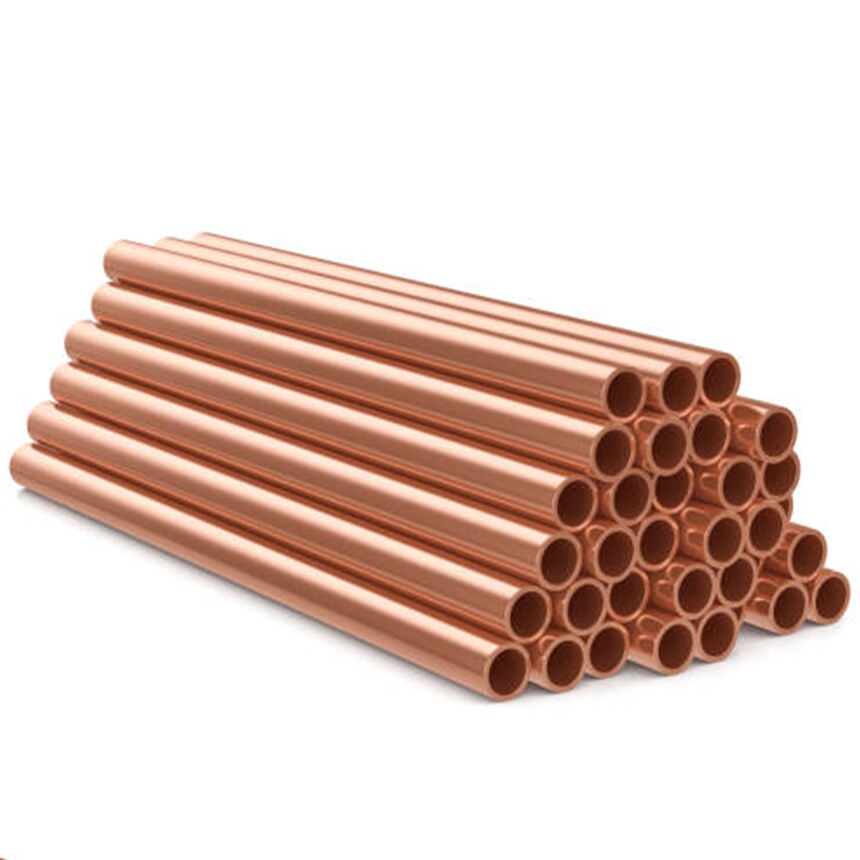Understanding Copper Pipe Fittings Procurement Essentials
Why Material Quality Impacts Long-Term Performance
What kind of copper goes into making pipe fittings really matters when it comes to how well those pipes perform over time. Better quality copper means the fittings tend to last longer before showing signs of wear, resist rust better, and generally hold up against whatever conditions they face. Top notch copper fittings just don't leak as much either, something that makes all the difference whether we're talking about homes or big industrial setups. Choosing premium grade materials basically means getting fittings that stand up against weather changes, chemical exposure, and other stressors while still working properly year after year. According to some research from the field, these higher quality copper fittings typically outlast standard ones by quite a margin, cutting down on the need for fixes and replacements down the road. Most plumbers and industry groups including the Copper Development Association keep emphasizing why picking the right materials matters so much during purchase decisions. After all, nobody wants plumbing problems caused by cheap materials failing unexpectedly.
Key Standards for Industrial-Grade Copper Fittings
Meeting quality standards for copper fittings matters a lot when it comes to keeping things safe, reliable, and compliant across different industrial settings. Organizations like ASTM and ISO establish what counts as good quality manufacturing practices for materials including copper. When manufacturers stick to these standards, their products tend to hold up better against tough environments and heavy usage over time. There are actual regulations in place across many sectors that monitor how copper fittings get used, making sure they pass minimum safety requirements before installation. Looking at these standards isn't just about ticking boxes for regulators either they actually make a difference in how well copper fittings perform day after day in real world conditions.
Types of Copper Fittings and Their Applications
Sweat vs Compression vs Push-Fit: Comparison Guide
Knowing when to choose sweat, compression, or push-fit fittings makes all the difference in getting the right job done for plumbing and HVAC work. Sweat fittings get the job done for permanent setups since they need soldering to make those watertight joints. Most plumbers stick with them because they know how to handle the heat, but let's face it, soldering takes practice and patience. Compression fittings? These bad boys are pretty handy for jobs where someone might need to take things apart later for maintenance. The compression ring does most of the work sealing everything up, so even folks just starting out can manage them without too much trouble. Then there are push-fit fittings like Shark-Bite that have taken off lately. No solder required means no worrying about open flames, which explains why both weekend warriors and pros grab these when speed matters most. From what we've seen in the field, seasoned technicians still go back to sweat fittings whenever longevity is key, whereas compression and push-fit options tend to show their strengths in situations where flexibility trumps absolute permanence.
M/L/K Copper Tubing Differences for Plumbing Systems
There are three main types of copper tubing available on the market today: M, L, and K. Each type has different wall thicknesses and pressure handling capabilities that make them suitable for particular jobs. Take Type K for instance. This one has the thickest walls and works best in situations where pressure is really high, such as underground water mains. The extra strength makes it last longer in places where things might shift around over time, but honestly, the price tag keeps most folks from using it unless absolutely necessary. Then there's Type L, which seems to be what plumbers reach for most often. It strikes a good balance between being thick enough to handle regular water pressure without breaking the bank. We see this stuff all over homes and even some businesses, particularly when local regulations won't allow the thinner Type M tubing. Speaking of Type M, this is the cheapest option out there because it's just so thin. Most homeowners use it for things that aren't super important like bathroom fixtures or kitchen faucets where nothing serious could go wrong if something leaks. Industry experts consistently point out that getting the right type for the job matters a lot for keeping everything running smoothly and safely in any plumbing system.
Specialized Fittings for HVAC and Gas Distribution
Specialized fittings play a really important role in HVAC systems and gas distribution networks because safety matters so much when dealing with pressure. For HVAC applications, components like tees, elbows, and flanges become necessary parts of the system design. These allow technicians to make those fine adjustments needed for controlling airflow even when temperatures swing wildly or pressure builds up. When it comes to distributing gas through pipelines, the fittings must meet strict regulations set by authorities to prevent dangerous leaks and maintain structural integrity despite changing pressure conditions throughout the day. Industry codes actually specify what materials can be used, usually looking for options that won't corrode over time and can handle those high pressure levels without failing. Looking at real world examples from manufacturing plants shows just how effective these specialized fittings can be in keeping systems running smoothly for years while following all the required safety rules. Choosing the right fittings means balancing what the regulations require against what actually works best on site, which ultimately protects both the physical setup and how reliably everything operates day after day.
Critical Factors in Supplier Selection
Certifications: ASTM, ISO, and Lead-Free Compliance
ASTM and ISO certifications play a big role in making sure copper fittings are both good quality and safe to use. These standards basically tell us whether products actually meet those tough industry requirements everyone talks about, something really important when it comes to keeping plumbing and HVAC systems working properly. When we look at lead-free compliance specifically, this matters a lot for our water pipes because nobody wants toxic metals leaching into their drinking water. Most professionals will tell anyone who asks that checking supplier paperwork isn't just optional but necessary if companies want to avoid getting stuck with non-compliant materials later on. Just glance through those certification documents regularly and don't be afraid to send someone out for an actual site visit now and then either way around makes sense for staying compliant across the board.
Production Capacity and Customization Capabilities
When it comes to keeping projects on schedule and maintaining proper stock levels, how much a supplier can produce really matters. If a company doesn't have enough production power, copper fittings might run out just when they're needed most, causing all sorts of headaches for construction teams. Custom parts matter too because different jobs require different solutions. A good supplier knows this and can create fittings tailored specifically for each project site. This kind of flexibility actually saves money down the road. We've seen cases where custom made fittings eliminated the need for extra pieces and reduced installation time by weeks. Most experienced buyers will tell you that suppliers who combine strong production volumes with solid customization options tend to be the most dependable partners in the long haul. These aren't just nice-to-have features anymore but essential elements when picking vendors for serious infrastructure work.
Global Logistics and Lead Time Reliability
Getting copper fittings where they need to go on time is all about good logistics management across the globe. When shipments arrive late, whole construction projects get delayed and budgets balloon out of control. For companies working on international infrastructure jobs or dealing with suppliers halfway around the world, dependable transportation becomes absolutely critical. The distance between manufacturing plants and job sites makes a huge difference in how long parts take to arrive. We've seen plenty of situations where a shipment gets stuck at customs or a container ship runs into mechanical problems somewhere in the Pacific. That's why smart businesses look for suppliers who have actually dealt with these kinds of headaches before and know how to work through them. A reliable logistics partner doesn't just save money in the short term it builds trust throughout the entire supply chain and keeps those surprise delays from turning into major setbacks.
Yiwu Jufang Technology's Competitive Advantages
Advanced Manufacturing Processes & Quality Control
What really sets Yiwu Jufang Technology apart in the crowded copper fitting market is their commitment to top notch manufacturing that just plain works better. They've invested heavily in modern tech and strict production protocols so everything coming out meets serious quality benchmarks. Take their precision machines for example these aren't your average equipment but specialized tools capable of crafting all sorts of copper fittings with remarkable accuracy and lasting strength. Their quality control isn't just paperwork either. Inspections happen constantly throughout production from raw materials right through final assembly. This means fewer defects and products that consistently hit those global standards manufacturers demand. Customers who have worked with them over time tend to mention how dependable these fittings are in real world applications, which speaks volumes about the company's dedication to making stuff that actually performs when it matters most.
Comprehensive Technical Support and After-Sales Service
At Yiwu Jufang Technology, technical support isn't just something we offer it's part of our DNA. Our team stands ready to help customers through every step from installation right through to ongoing maintenance, which helps avoid those frustrating problems that can pop up unexpectedly. What really sets us apart though is our after sales approach. We don't see support ending at delivery time. When customers have questions later on or need adjustments made, our specialists jump in quickly. Many businesses tell us this level of follow through makes all the difference when building relationships that last years instead of months. Industry reports show that companies with strong post sale engagement typically retain around 30% more clients annually compared to those without such programs. For Yiwu Jufang, keeping customers happy long term means staying accessible and proactive even after the initial transaction completes.
Cost-Effectiveness Through Vertical Integration
Yiwu Jufang Technology controls costs and keeps prices competitive thanks to vertical integration. When they handle everything in-house from production to distribution, they cut down on outside suppliers which means less risk when markets fluctuate. The company can run things smoother overall because there's no waiting around for third parties to deliver parts or materials. Looking at what other companies in the sector pay for similar products shows just how much money Yiwu Jufang saves through this setup. These savings translate directly into better deals for buyers who want quality components without breaking the bank. For businesses shopping around for reliable suppliers, these kinds of cost efficiencies make all the difference in staying competitive themselves.
Customized Service Cases
Yiwu Jufang Technology really stands out when it comes to custom service projects, helping customers hit their exact project targets through made-to-order solutions. Take for instance their work on pipe fittings designed specifically according to what customers need, something that addresses some pretty niche industrial applications. Their ability to customize means they can handle all sorts of different operational challenges while keeping clients happy. With years in the field behind them, they know how to create fittings that actually work within those strict technical specs and regulations that many industries require. This approach has become something of a specialty for them over time.
Best Practices for Installation & Maintenance
Proper Soldering Techniques to Prevent Leaks
Getting those copper fittings to stay leak free really comes down to getting good at soldering. The basics are pretty straightforward actually - start by giving that copper surface a proper scrub down, apply some decent flux, then heat things up just right so the solder melts properly and flows into all the nooks and crannies. People often mess this up because they skip cleaning the metal properly, throw on too much solder without thinking, or worse yet, melt everything with excessive heat that just weakens the joint instead of strengthening it. Most pros will tell anyone who asks that following local plumbing regulations matters a lot here, plus listening to what experienced plumbers say about keeping surfaces spotless before starting and picking the right kind of solder for each job. And don't forget to look closely after applying the solder to make sure it spreads out evenly across the whole joint area. That attention to detail makes all the difference when it comes time to test those pipes under pressure later on.
Identifying Early Signs of Corrosion or Wear
Techs working on copper piping systems really need to keep an eye out for signs that things are starting to break down. Look for those telltale green spots on the metal surface, rusty patches, joints that leak when they shouldn't, and any strange color changes throughout the system. These are red flags that something needs checking right away, maybe even replacing parts before bigger problems develop. To track what's happening with copper pipes over months and years, most experienced plumbers do regular walk-throughs looking at the physical condition while also using moisture detectors and pH testing kits to catch corrosion before it gets bad. The industry guides we all follow stress how important these checkups are for avoiding major repairs later on. Most pros recommend doing monthly visual assessments plus applying anti-corrosion treatments every couple of years to keep those copper fittings lasting longer than expected.
When to Use Dielectric Unions for Mixed Metals
Dielectric unions work really well in systems that mix different metals because they stop galvanic corrosion from happening. Installers need these special fittings whenever there's a chance that metals like copper and steel might interact electrically, something that speeds up corrosion problems over time. On the flip side, there's no real need for dielectric unions if all the pipes and fittings are made from the same material, or if the water flowing through doesn't create conditions for galvanic reactions. Most plumbers will tell anyone who asks that checking out what kind of metals are used together and testing the water chemistry first makes sense before installing anything. After all, getting this right means avoiding expensive repairs down the road and keeping those mixed metal systems running smoothly for years instead of months.









